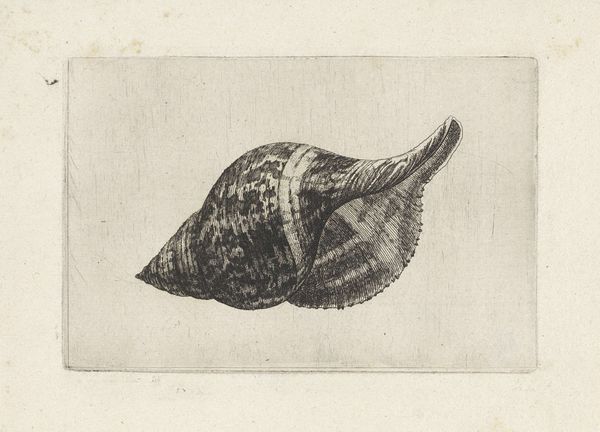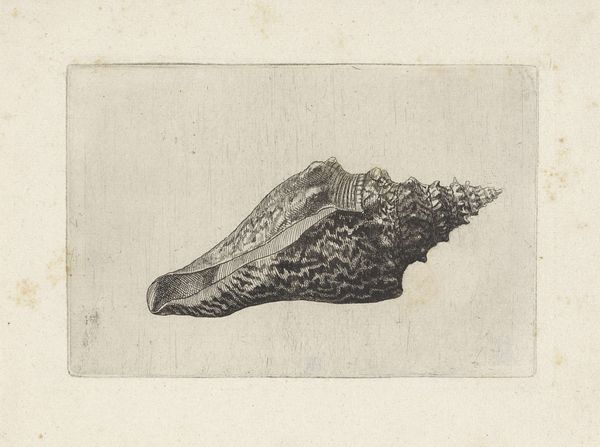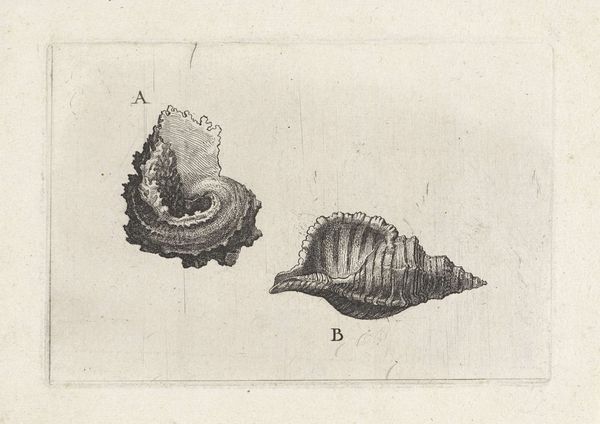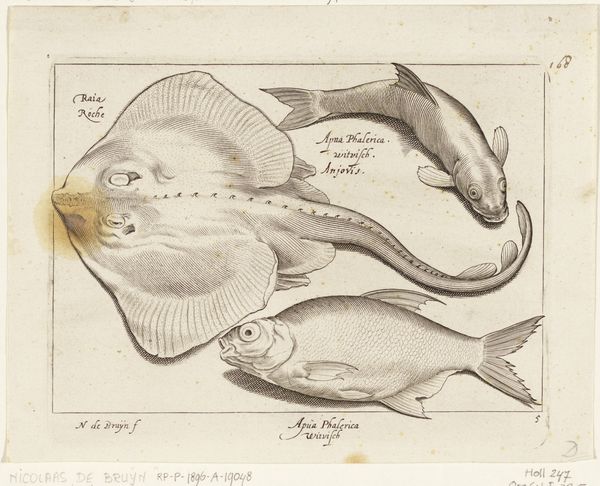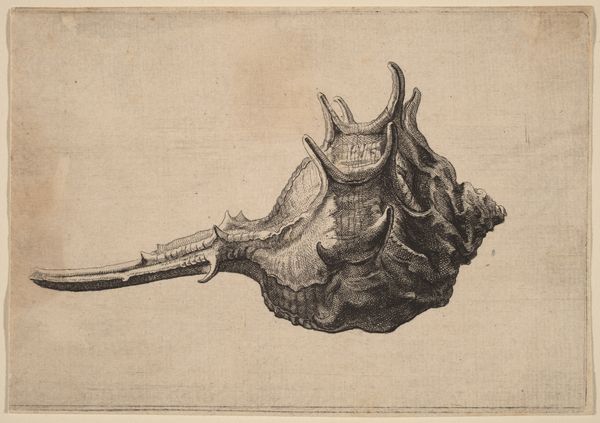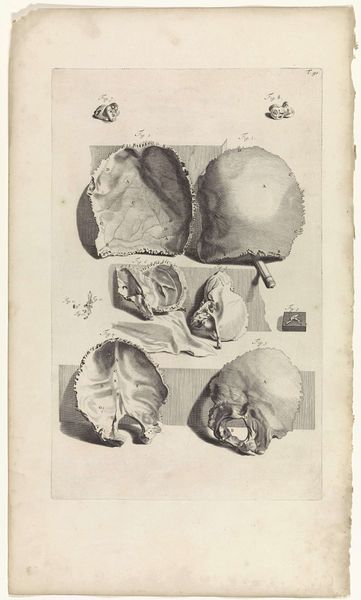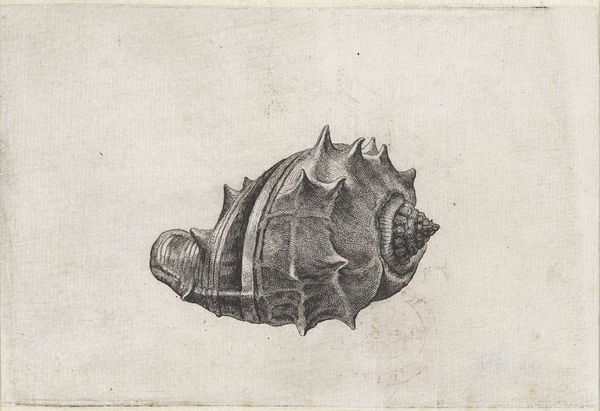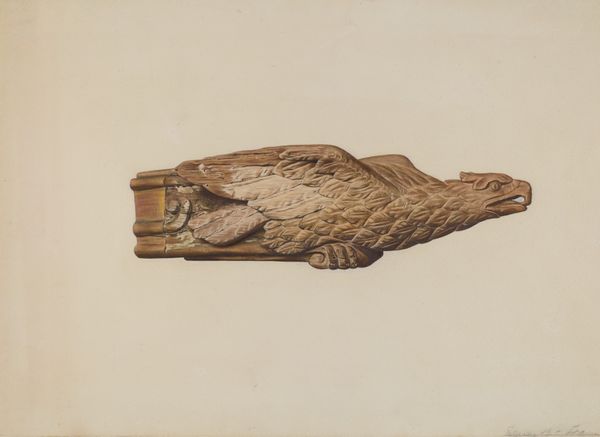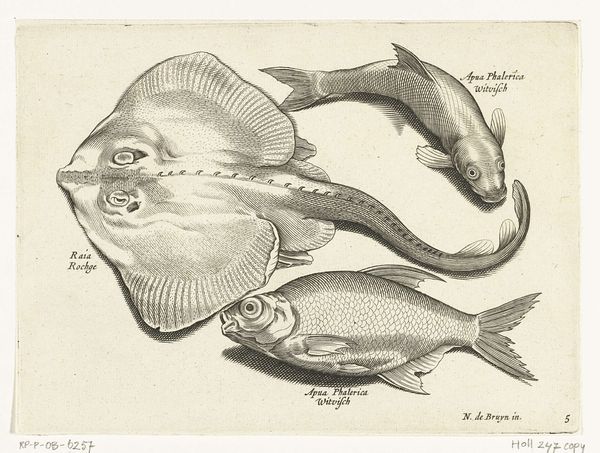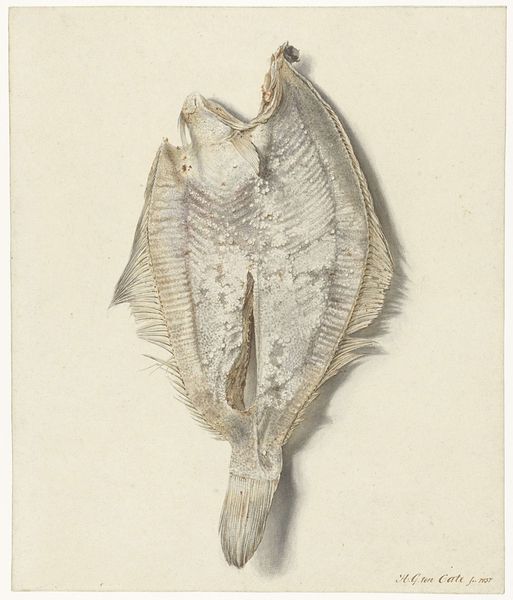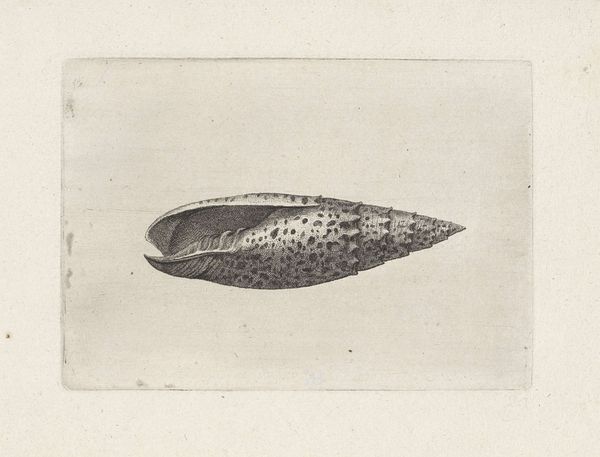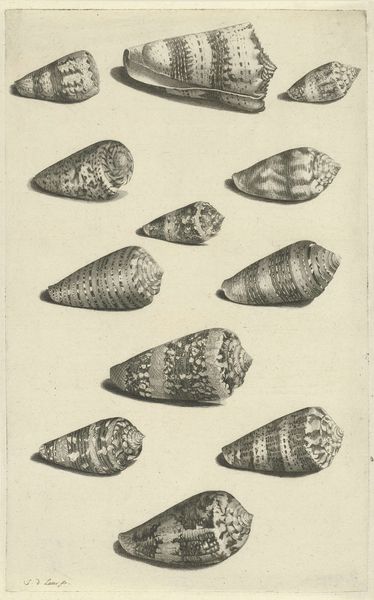
Shell: Hebrew Volute ( Voluta ebraea L) 1641 - 1651
0:00
0:00
drawing, print, engraving
#
drawing
#
baroque
# print
#
line
#
engraving
#
realism
Dimensions: Plate: 3 13/16 × 5 9/16 in. (9.7 × 14.2 cm) cut on the platemark at right and with thread mar gins elsewhere
Copyright: Public Domain
Curator: Wenceslaus Hollar's "Shell: Hebrew Volute," made between 1641 and 1651, depicts the Voluta ebraea shell through engraving, ink, and etching. It’s currently held at the Metropolitan Museum of Art. What's your first take on this Baroque natural study? Editor: There's an interesting juxtaposition here—an almost stark realism alongside a distinct sense of fragility and isolation, amplified by the print's monochrome. The single shell on a bare background speaks volumes about the Baroque era’s view of the natural world. Curator: It certainly mirrors the burgeoning scientific curiosity of the period. Hollar, however, was often commissioned to document collections of curiosities, almost like a visual inventory during the rise of encyclopedic thinking and proto-museums. The choice of this "Hebrew Volute," its name hinting at perceived connections with ancient scripts, speaks to a broader, somewhat colonial, scholarly project. Editor: Yes, I see that layered reading now. The volute form itself, swirling inward, feels ancient—carrying echoes of sacred spirals and scrolls. Beyond a natural study, it feels almost totemic, referencing perhaps the desire to decode nature as if it held textual secrets. Curator: Absolutely. The "Hebrew" in the name is itself a cultural imposition, associating the shell with ancient and perhaps esoteric knowledge. These prints helped to circulate and standardize the image of this shell, participating in the creation of scientific and cultural meaning. Editor: Precisely, shaping not just how we understand a single shell, but our relationship with the world itself. It’s about control and definition as much as appreciation, and an age of discovery through visual appropriation and circulation. Curator: Ultimately, Hollar's detailed rendering is more than just observation; it's an act of classification within a complex web of emerging scientific, cultural, and colonial endeavors. Editor: It has reshaped my view of what initially struck me as simply an isolated specimen, I now see a dense object of multiple cultural intentions.
Comments
No comments
Be the first to comment and join the conversation on the ultimate creative platform.
